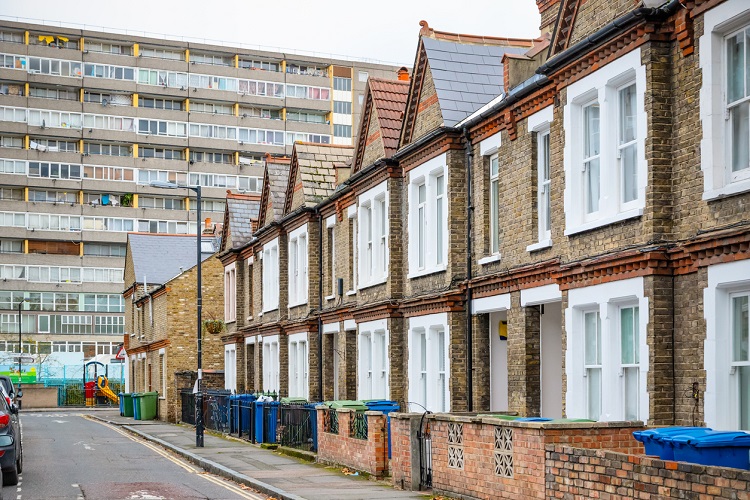Investing in social housing in the UK is one of those opportunities that often flies under the radar, yet it has the potential to provide stable returns while also addressing a crucial societal need. If you’re thinking about long-term investment strategies, this is definitely one to consider. Unlike traditional buy-to-let, social housing offers a unique mix of government-backed security, lower void periods, and a positive social impact. But how do you actually get started?
Understanding Social Housing Investment
Social housing is essentially affordable rental housing provided to those in need, typically through housing associations or local authorities. The government supports these initiatives, meaning rental income is often secured through benefits like Universal Credit or direct agreements with councils. This creates a level of reliability that’s hard to find in the private rental sector.
If you’re wondering why social housing investment is worth your attention, consider this: demand far outstrips supply. The UK has a growing housing crisis, with long waiting lists for affordable homes. That demand isn’t going away anytime soon, which makes this a strong long-term play.
Different Ways to Invest
There’s more than one way to put your money into social housing, so let’s go through some of the most common options.
Buy and Lease to Housing Associations
One of the most straightforward ways to invest is buying properties and leasing them to housing associations or local councils. These organisations then manage the tenants, meaning you don’t have to deal with the usual landlord headaches. The lease agreements are often long-term, sometimes lasting 10-25 years, offering predictable rental income.
Investing in Social Housing REITs
If you’d rather not deal with property management at all, Real Estate Investment Trusts (REITs) focused on social housing could be an option. These are companies that own and manage social housing portfolios, allowing you to invest without actually buying property. You’ll earn returns through dividends and potential capital appreciation.
Property Development
For those with more capital and experience, developing properties for social housing can be highly rewarding. This could mean converting existing buildings into affordable units or partnering with housing associations to build new developments. It requires more involvement but can lead to strong financial and social returns.
Government Schemes and Partnerships
Some investors work directly with government-backed schemes, providing homes under initiatives aimed at increasing social housing stock. These schemes often come with incentives like grants or tax benefits, making them an attractive choice for long-term investors.
Key Benefits of Investing in Social Housing
Now that you’ve got a few options to think about, let’s talk about why social housing investment can be such a solid long-term move.
Stable and Predictable Income
Unlike private rentals, where tenants might struggle with rent or move out frequently, social housing often comes with built-in security. Rental income is often backed by the government, meaning payments are more consistent. Long lease agreements also mean you’re less likely to experience vacancies.
Lower Tenant Turnover
Social housing tenants tend to stay for the long term because they rely on the security of affordable rent. This reduces void periods and the costs associated with finding new tenants.
Ethical and Social Impact
Beyond financial returns, investing in social housing means contributing to a cause that genuinely helps people. You’re providing homes for vulnerable individuals and families who might otherwise struggle to find stable accommodation.
Government Support and Incentives
The government is always looking for ways to increase social housing availability. This means there are often grants, tax benefits, and funding opportunities for investors willing to support this sector.
Risks and Challenges to Consider
No investment is without its risks, and social housing is no exception. Here are a few things to keep in mind:
Property Management and Maintenance
Even if you’re leasing to a housing association, you may still be responsible for some level of property maintenance. Understanding these obligations before signing an agreement is crucial.
Market and Policy Changes
Government policies around housing benefits and social housing funding can shift over time. Keeping up with these changes is important to ensure your investment remains viable.
Location Matters
Like any property investment, location is key. Some areas have higher demand for social housing, while others might struggle with oversupply. Doing proper research into local demand and council partnerships can make all the difference.
How to Get Started
If this type of investment sounds appealing, here’s how you can take the first steps:
Step 1: Research the Market
Look at areas with high social housing demand and check council waiting lists. Cities like London, Manchester, and Birmingham often have significant need, but smaller towns can also present great opportunities. Understanding where demand is strongest will help you make informed decisions.
Step 2: Choose Your Investment Route
Decide whether you want to buy and lease properties, invest in a REIT, develop social housing units, or work through government-backed schemes. Each option has different levels of involvement, risk, and return potential, so choose what aligns best with your financial goals and risk tolerance.
Step 3: Understand the Financials
Calculate your budget, secure funding, and factor in all potential costs—purchase price, refurbishment, legal fees, and ongoing maintenance. Look into financing options such as mortgages, grants, or partnerships with housing associations.
Step 4: Find the Right Partners
Engage with housing associations, local councils, or property managers who specialise in social housing. These organisations can help you navigate lease agreements, find tenants, and manage properties efficiently.
Step 5: Conduct Due Diligence
Before making any commitments, thoroughly inspect properties, check legal requirements, and review lease agreements. If investing in a REIT, research its track record and financial health.
Step 6: Make Your Move
Once everything is in place, proceed with your investment. If buying a property, complete the purchase and set up agreements with a housing association or council. If investing in a REIT, buy shares through a brokerage account.
Step 7: Manage and Monitor
Even if you have a lease agreement in place, stay involved by monitoring rental income, maintenance needs, and policy changes. Regularly review your investment to ensure it continues to perform well.
Pro Tip: Building strong relationships with housing associations and councils can give you access to exclusive investment opportunities and better lease agreements. Stay proactive and engaged in the sector for the best results.


